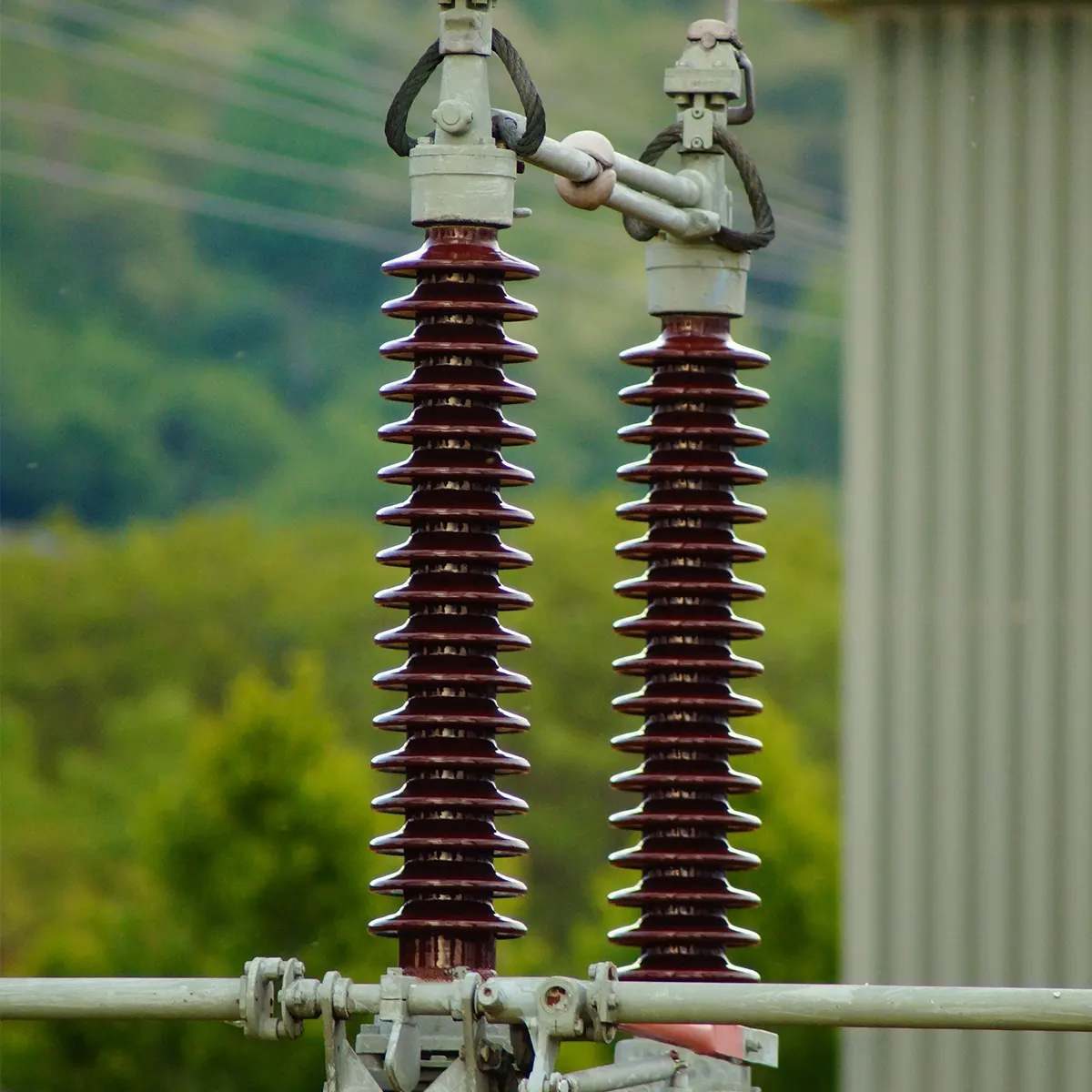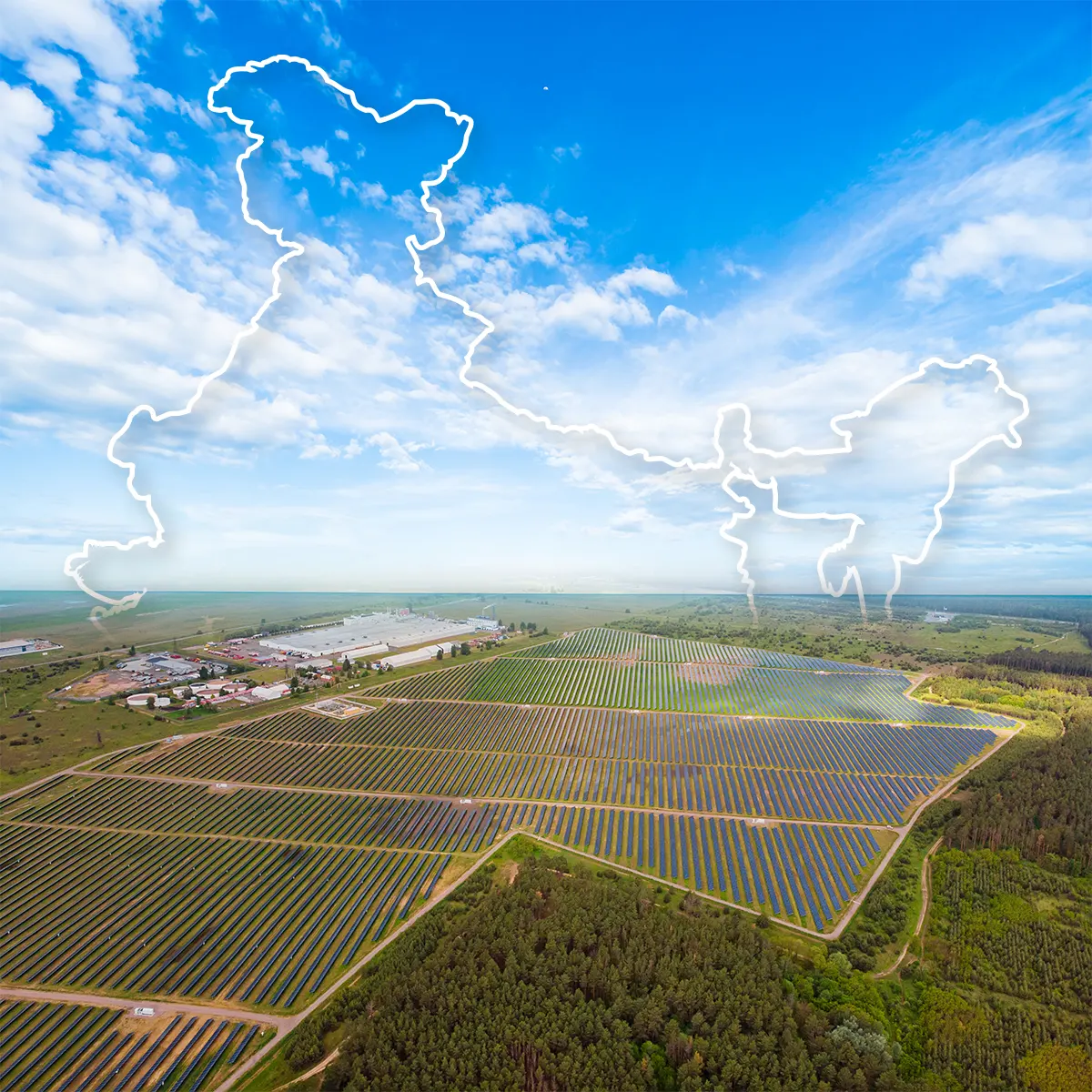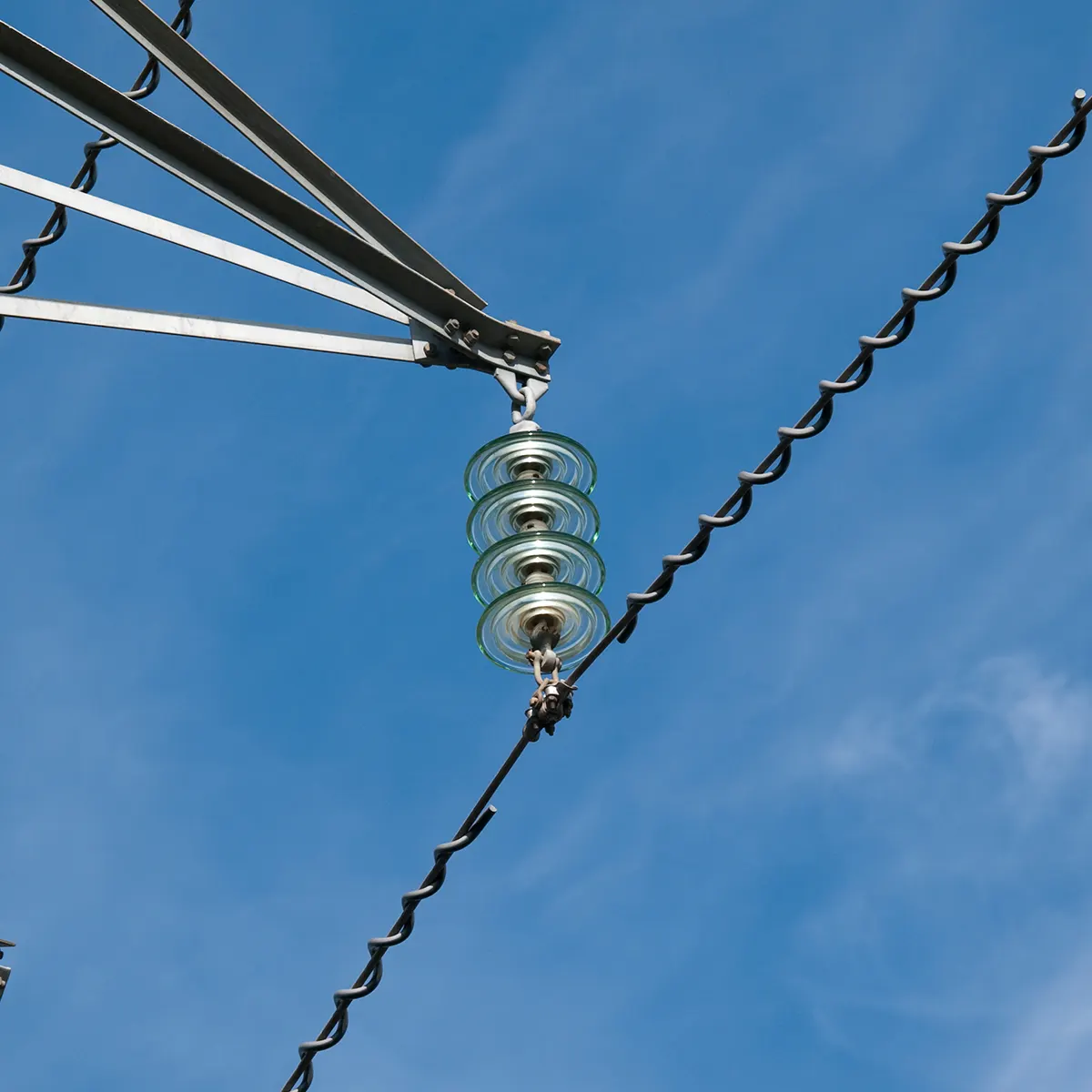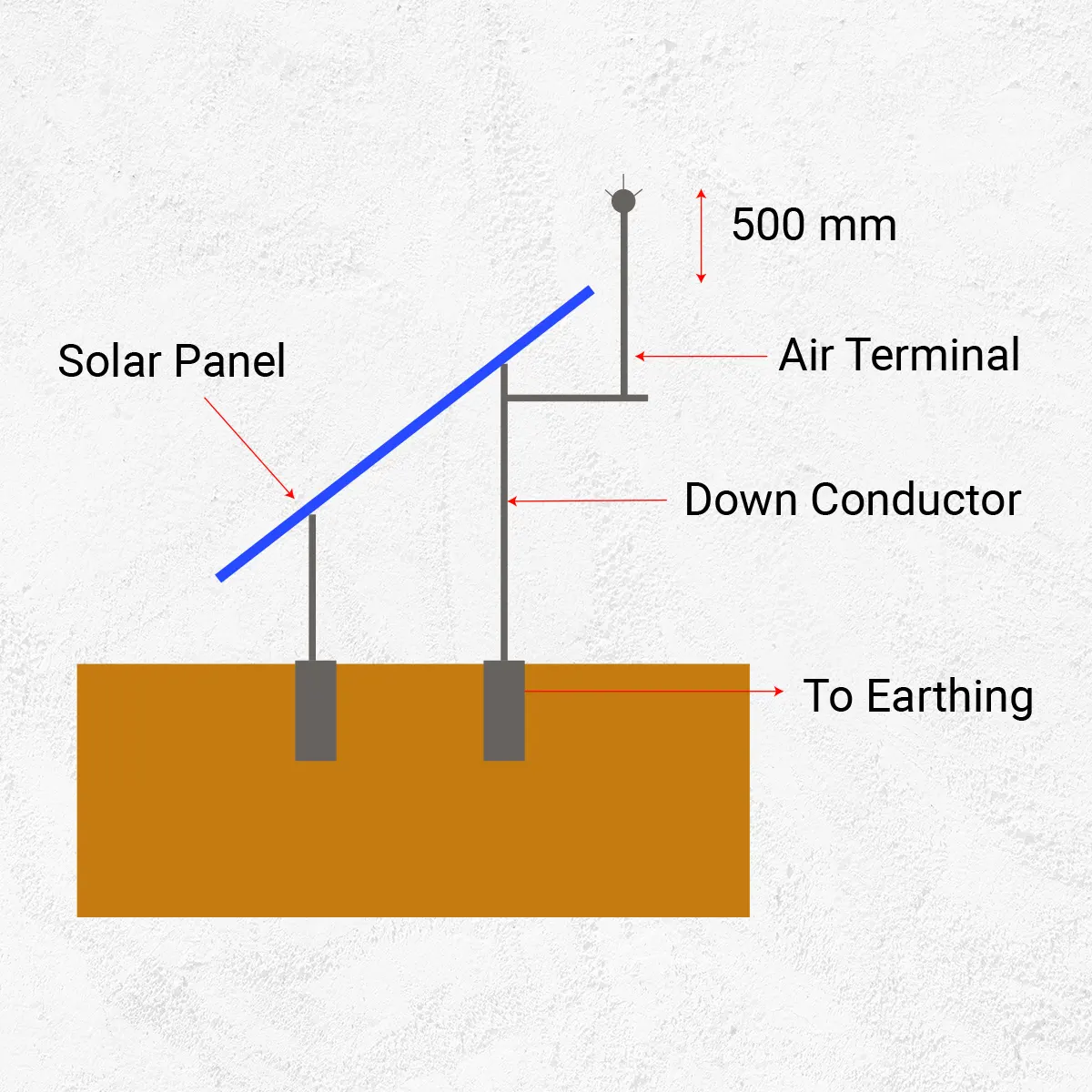The Sky is Not Always Friendly
As solar energy continues to rise as a reliable and sustainable power source, the scale and sensitivity of solar installations demand critical safety measures. One of the most overlooked, yet essential, aspects of solar project safety is lightning protection. Solar panels, by design, are installed in open spaces and elevated locations, often becoming attractive targets for lightning strikes.
In this edition of our Solar Progress Newsletter, we delve into the need, mechanism, and modern advancements of lightning protection systems in solar energy projects.
What are Lightning Arrestors?
A lightning arrester is a protective device designed to shield electrical circuits from the damaging effects of lightning strikes. These strikes generate high transient voltages, isolation arcs, sparks, and surge currents that can severely harm electrical systems. Lightning arresters work by safely diverting this excess voltage to the ground, preventing damage to the connected equipment. Additionally, proper grounding or earthing—along with ground wires—offers further protection by minimizing the risk of direct lightning strikes on overhead lines and electrical installations.
In a solar rooftop system, a lightning arrester acts like a vigilant watchman—constantly alert and guarding the installation from the destructive impact of lightning strikes. Working alongside surge protectors and lightning diverters, it channels the high-voltage energy safely through low-impedance paths. This prevents harmful electrical surges from entering the solar panels and connected equipment, ensuring the system remains safe and functional.


The Growing Scope of Solar Installations in India
India is witnessing a revolution in renewable energy, with solar energy leading the charge. Backed by government schemes, falling panel prices, and climate urgency, both large-scale solar farms and residential rooftop systems are on the rise. As the number of installations grows, so does the need to protect these investments from environmental hazards — particularly lightning.
As a solar energy manufacturer or EPC player, safety is more than just compliance. It's a long-term commitment to performance, efficiency, and client trust.
Why Lightning Protection is Crucial in Solar Projects:
Geographic Risk: India’s monsoon climate makes most regions vulnerable to lightning strikes, especially during the pre-monsoon and monsoon seasons. Solar panels mounted on rooftops and ground-mounted solar PV modules become direct targets.
High Capital Investment: With high-value components like solar panels, inverters, and monitoring equipment, even a single surge can lead to significant financial losses.
Operational Downtime: A strike can halt the energy generation process, disrupting supply and affecting power purchase agreements or ROI timelines.
Risk to Life and Property: Poorly protected systems can transmit surges into buildings, posing danger to human lives and connected appliances.


How Lightning Arrestors Work
A lightning arrestor or SPD is designed to protect electrical equipment from over-voltage transients caused by external (lightning) or internal (switching) events. It acts as a conduit that diverts the surge to the ground before it reaches sensitive components like inverters or control systems.
Lightning Arrester Process:
Lightning arresters are strategically installed near critical components such as electrical panels or generators to safeguard sensitive equipment. When lightning strikes, the arrester activates, safely diverting the electrical surge away from vital systems and channelling it into the ground where it dissipates without causing harm.
It’s important to note that a lightning arrester does not stop lightning from striking. Instead, it manages the surge by providing a controlled path for the electrical discharge. This ensures that the high-voltage energy doesn’t damage costly or essential electrical infrastructure.
As a crucial component of a comprehensive lightning protection system, lightning arresters enhance safety by responding to incoming surge waves. Once a wave reaches the arrester, it exceeds a set voltage threshold, prompting the arrester to create a low-resistance path between the power line and the ground. This action effectively limits the current and protects insulation and connected equipment from damage.
Types of Lightning Arresters
While the functioning of lightning arresters may involve complex mechanisms, their core purpose remains the same — to offer a low-resistance path for electrical surges to safely travel to the ground. Commonly referred to as surge diverters or lightning dischargers, these devices are essential in protecting electrical systems from damage.
Below are the different types of lightning arresters commonly used in solar panel installations:
- Rod Gap Arrester
- Sphere Gap Arrester
- Horn Gap Arrester
- Multiple-Gap Arrester
- Impulse Protective Gap Arrester
- Electrolytic Arrester
- Expulsion Type Lightning Arrester
- Valve Type Lightning Arresters
- Thyrite Lightning Arrester
- Auto valve Arrester
- Oxide Film Arrester
- Metal Oxide Lightning Arrester

Designing a Lightning Protection System (LPS) for Solar Plants:
When integrating lightning protection into a solar installation, several factors need careful consideration:
Site Assessment: Evaluate the lightning density and keraunic level (number of thunderstorm days/year) of the region.
Solar Module Structure and Height: Taller modules need better air terminal coverage, especially in elevated locations like hilly terrains or rooftops.
Earthing Systems: Copper-coated or galvanized rods are used to safely discharge excess current into the ground. The quality and depth of earthing significantly affect performance.
Panel Arrangement & Wiring: The layout of the solar panels and wiring can act as unintentional conductors. A well-planned layout minimizes exposed loops and ensures shorter conductor paths to ground.
Latest Technology in Solar Panels and Inverters: With the advent of high-efficiency solar PV modules and smart inverters, compatibility with surge protection standards becomes essential.
External Protection Systems
External protection systems are designed to shield solar rooftop installations from direct lightning strikes. These systems activate only when a lightning strike occurs, safely redirecting the energy away from the solar panels and connected equipment. By doing so, they help prevent damage and ensure the continued safety and functionality of the entire solar setup.
Key Components in a Lightning Protection System for Solar:
- Air Termination System
- Down Conductors
- Earth Termination System

Internal Lightning Protection System (LPS)
An Internal Lightning Protection System (LPS) is implemented to safeguard the building and its electrical infrastructure from indirect lightning strikes. This system ensures safety through the following methods:
- SPD (Surge Protection Devices)
- Lightning Equipotential Bonding
IEC Standards for Lightning Protection
The International Electrotechnical Commission (IEC) sets global standards for electrical, electronic, and related technologies. For lightning protection, the BS EN/IEC 62305 standard provides a comprehensive framework, structured into four key parts:
- General Principles
- Risk Management
- Protection against Physical Damage and Life Hazards
- Protection of Electrical and Electronic Systems
These standards ensure a systematic approach to safeguarding structures and systems from lightning-related risks.
Common Challenges and Solutions in LPS Design
The International Electrotechnical Commission (IEC) sets global standards for electrical, electronic, and related technologies. For lightning protection, the BS EN/IEC 62305 standard provides a comprehensive framework, structured into four key parts:
| Challenge | Solution |
|---|---|
| Improper grounding in rural areas | Use chemical earthing for longevity and efficiency |
| High cost of copper | Employ galvanized iron (GI) with anti-corrosion treatment |
| Lightning bypassing the arrestor | Recalculate protection radius and increase height of rods |
| Interruption of solar generation due to surge | Install SPDs at both AC & DC ends of inverters |
The Way Forward: Don’t Let Lightning Strike Your Investment
Investing in a reliable lightning protection system is not a luxury — it’s a necessity for every solar energy project, whether residential, commercial, or utility-scale. With climate uncertainties and extreme weather events becoming more frequent, protection is a pillar of sustainability.
As leading solar panel manufacturers in India , it's our responsibility to ensure our products and installations are designed not just for performance but for resilience. Whether you’re choosing a solar pv module for your rooftop or planning a solar farm, ensure that lightning protection is a non-negotiable part of your checklist.
Conclusion
Solar energy is powering a greener future, but securing that future needs thoughtful action. With carefully planned lightning protection systems, you’re not only saving your infrastructure — you’re protecting an ecosystem of investments, trust, and clean power generation.
As a top-tier solar module manufacturer , our commitment goes beyond manufacturing. We believe in enabling robust, future-ready, and safe solar infrastructure for all.
Let’s build solar smarter. Let’s build solar safer.
Get in touch with us today to know more about our lightning protection-integrated solar solutions!